City Of Sais: Prehistoric Prestigious Cult Center Of Northern Egypt
A. Sutherland - AncientPages.com - Millennia ago, a beautiful Egyptian city existed in the western Egyptian delta along the Rosetta branch of the Nile River. Its name was ‘Sa’, known from its Greek name: ‘Sais’ (Saïs).
History of Sais goes back to Egypt’s pre-dynastic times (prior to 3100 BC) but the only visible ruins are not older than the 11th century. At the ancient site, there is now a village of Sa al-Hagar (‘Sa - means stone’ in Arabic). There are today no surviving traces of this town prior to the Late New Kingdom (c.1100 BC)
 According to Herodotus and some other sources, Sais was a prestigious cult center of northern Egypt about 3100 BC, full of great and luxurious buildings and royal sepulchers.
According to Herodotus and some other sources, Sais was a prestigious cult center of northern Egypt about 3100 BC, full of great and luxurious buildings and royal sepulchers.
The city suffered damage at the hands of Cambyses, who four years after ascending the throne, marched against Egypt, where he ruined the tomb of Amasis (also known as Ahmose II, which means "The Moon is Born, Son of Neith").
Amasis was probably the 5th ruler of Egypt during the 26th Dynasty and has been called the last great Egyptian Pharaoh. He ruled 44 years and made many contributions to the country.
He established himself at Sais in Northern Egypt and there – like in many other places in Egypt – he ordered to build huge buildings including his tomb at Sais, which was unfortunately never discovered, but according to Herodotus’ description was beautiful:
‘It is a great cloistered building of stone, decorated with pillars carved in the imitation of palm-trees, and other costly ornaments. Within the cloister is a chamber with double doors, and behind the doors stands the sepulchre…"
In the age of the Ptolemies (B.C. 323 to 30), Sais was an important center.
Ancient Sais was the center of the cult of the goddess of war and hunting, Neith, who was the patron goddess of Sais, a great protector of the people of the land and the most accomplished mediator between humanity and the gods. From the Late Period (1000 BC onwards), the Neith temple was a center of pilgrimage.
See also:
Sobek – Enigmatic Crocodile God Of Ancient Egypt
Who Was King Menes? Mystery Of This Legendary Ruler May Go Back 20,000 Years
Unusual Double Temple Of Kom Ombo Dedicated To Crocodile God Sobek And Falcon-Headed God Horus
However, Sais had several other temples dedicated to the creator god Atum and one dedicated to the Egyptian Lord of the Underworld and Judge of the Dead, Osiris. According to Herodotus, the grave of Osiris was located at Sais and that the sufferings of this god were displayed as a mystery by night on a neighboring lake.
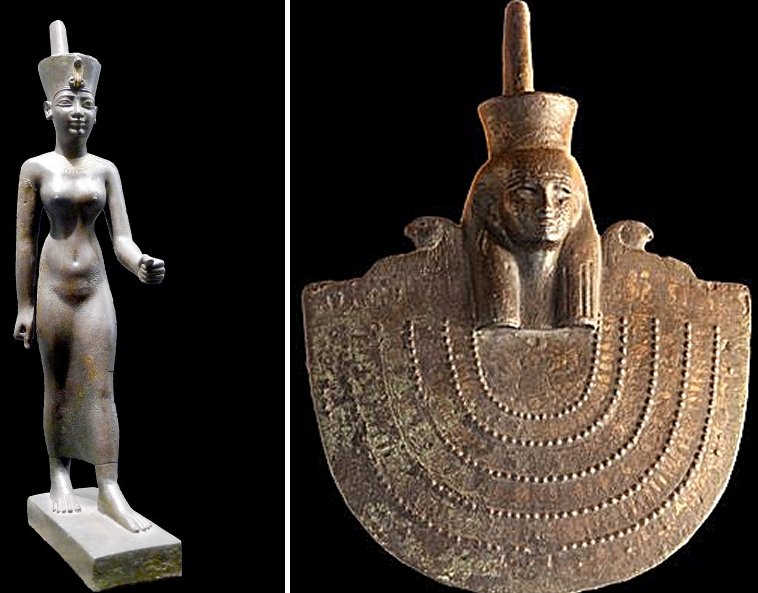
Left: A gilded bronze statuette of the Egyptian goddess of war Neith. 664-332 BCE. (Louvre, Paris); Right: Goddess Neith, the Egyptian goddess of war. Gilded bronze, XXVI Dynasty, c. 664-525 BCE. Museum of Fine Arts, Lyon, France
The Temple of Sais had a medical school associated with it and the medical school at Sais had many female students and apparently women faculty as well, mainly in gynecology and obstetrics.
An inscription from the period survives at Sais, and reads,
"I have come from the school of medicine at Heliopolis, and have studied at the woman's school at Sais, where the divine mothers have taught me how to cure diseases…".
Many kings of Sais were clever men and among them was King Nekau of the Twenty-sixth Dynasty (ruled 15 years) who despatched an expedition that circumnavigated Africa, and he was the king who started the construction of a canal from the Nile to the Red Sea, completed by the Achaemenid king Darius I.
Another ruler of Sais was Psamtek (Psammetichus III) son of Amasis, who was considered Persia's constant enemy. The Persians invaded Egypt in 525 BC just after Psamtek III became king.
The Sais’ fate is not exactly known but it is known by the Persian king Cambyses destroyed much on his way including several temples at Sais.
Written by A. Sutherland - AncientPages.com Staff Writer
Copyright © AncientPages.com All rights reserved. This material may not be published, broadcast, rewritten or redistributed in whole or part without the express written permission of AncientPages.com
Expand for referencesMore From Ancient Pages
-
 New Discovery Reveals Why And When The Sahara Desert Was Green
Places | Sep 13, 2023
New Discovery Reveals Why And When The Sahara Desert Was Green
Places | Sep 13, 2023 -
 Significance Of Secret And Powerful Number 108 That Has Accompanied Humankind For Thousands Of Years
Ancient Symbols | Jun 19, 2017
Significance Of Secret And Powerful Number 108 That Has Accompanied Humankind For Thousands Of Years
Ancient Symbols | Jun 19, 2017 -
 Mystery Of The Lost Underground City Of The Grand Canyon
Featured Stories | Nov 19, 2014
Mystery Of The Lost Underground City Of The Grand Canyon
Featured Stories | Nov 19, 2014 -
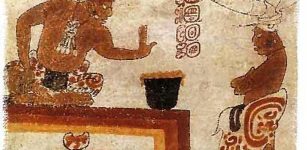 Chocolate Was Invented In Mesoamerica 1900 B.C.
Ancient History Facts | Jan 17, 2016
Chocolate Was Invented In Mesoamerica 1900 B.C.
Ancient History Facts | Jan 17, 2016 -
 Ancient Secrets Of The Amazon Jungle – The Man Who Stepped Into The Unknown Searching For The Lost City Of The Gods – Part 2
Ancient Mysteries | Mar 5, 2019
Ancient Secrets Of The Amazon Jungle – The Man Who Stepped Into The Unknown Searching For The Lost City Of The Gods – Part 2
Ancient Mysteries | Mar 5, 2019 -
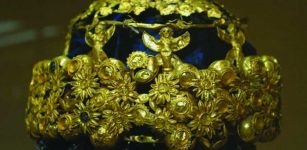 Long-Lost Mesopotamian Queen Hama Discovered By Student Just By Reading Books
Archaeology | Feb 14, 2019
Long-Lost Mesopotamian Queen Hama Discovered By Student Just By Reading Books
Archaeology | Feb 14, 2019 -
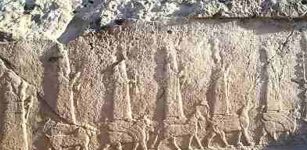 Ten Inscriptions Related To Sargon Unearthed At Ancient Assyrian Site In Iraq’s Kurdistan Region
Archaeology | Jan 20, 2020
Ten Inscriptions Related To Sargon Unearthed At Ancient Assyrian Site In Iraq’s Kurdistan Region
Archaeology | Jan 20, 2020 -
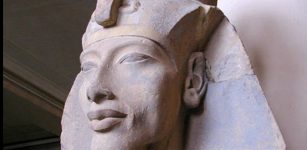 Akhenaten: Unorthodox Ruler Who Had Only One God
Featured Stories | Mar 28, 2017
Akhenaten: Unorthodox Ruler Who Had Only One God
Featured Stories | Mar 28, 2017 -
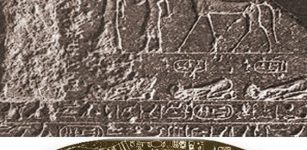 Ancient Stela Of Piankhi – King Of Napata, Rightful Ruler And Maintainer Of Maat
Featured Stories | Apr 25, 2018
Ancient Stela Of Piankhi – King Of Napata, Rightful Ruler And Maintainer Of Maat
Featured Stories | Apr 25, 2018 -
 3,300-Year-Old Bronze Figurine Of Canaanite God Unearthed At Lost Biblical City
Archaeology | Apr 12, 2020
3,300-Year-Old Bronze Figurine Of Canaanite God Unearthed At Lost Biblical City
Archaeology | Apr 12, 2020 -
 Secrets Of 160,000 Ancient Texts Kept In The Abbey Library Of St. Gall May Soon Be Unlocked By AI
Linguistic Discoveries | Aug 23, 2021
Secrets Of 160,000 Ancient Texts Kept In The Abbey Library Of St. Gall May Soon Be Unlocked By AI
Linguistic Discoveries | Aug 23, 2021 -
 Medieval Manuscript Reveals Surprising Discovery Of Star Wars Master Yoda & Shocking Monsters
Artifacts | Apr 27, 2015
Medieval Manuscript Reveals Surprising Discovery Of Star Wars Master Yoda & Shocking Monsters
Artifacts | Apr 27, 2015 -
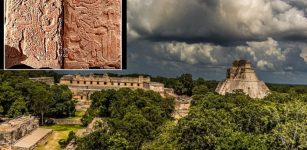 Ancient Maya Stela Carved On Both Sides Unearthed ‘In Situ’ In Uxmal, Yucatan Peninsula
Archaeology | Oct 31, 2022
Ancient Maya Stela Carved On Both Sides Unearthed ‘In Situ’ In Uxmal, Yucatan Peninsula
Archaeology | Oct 31, 2022 -
 Rare 1,400-Year-Old Temple Possibly Used By East Anglian Kings Discovered In Suffolk, UK
Archaeology | Nov 22, 2023
Rare 1,400-Year-Old Temple Possibly Used By East Anglian Kings Discovered In Suffolk, UK
Archaeology | Nov 22, 2023 -
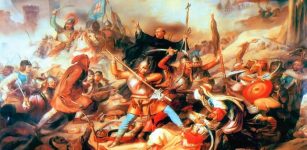 On This Day In History: Siege Of Belgrade – Hungarian Battle Victory – On July 4,1456
News | Jul 4, 2016
On This Day In History: Siege Of Belgrade – Hungarian Battle Victory – On July 4,1456
News | Jul 4, 2016 -
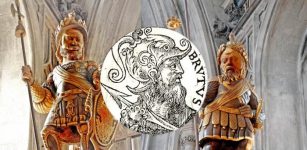 Brutus Of Troy: First King Of Britain Or Just A Myth?
Featured Stories | Feb 16, 2016
Brutus Of Troy: First King Of Britain Or Just A Myth?
Featured Stories | Feb 16, 2016 -
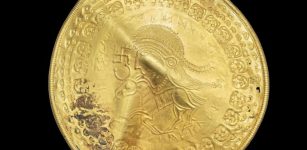 Vindelev Treasure Re-Writes Ancient History – World’s Oldest Runic Inscription Of God Odin Found On Ancient Gold Pendants
Archaeology | Mar 8, 2023
Vindelev Treasure Re-Writes Ancient History – World’s Oldest Runic Inscription Of God Odin Found On Ancient Gold Pendants
Archaeology | Mar 8, 2023 -
 What Was Life Like For Children In Ancient Athens?
Ancient History Facts | Jul 4, 2018
What Was Life Like For Children In Ancient Athens?
Ancient History Facts | Jul 4, 2018 -
 Rare Hidden Copy Of Shakespeare Sonnet 116 Discovered In A 17th-Century Poetry Collection
Linguistic Discoveries | Mar 24, 2025
Rare Hidden Copy Of Shakespeare Sonnet 116 Discovered In A 17th-Century Poetry Collection
Linguistic Discoveries | Mar 24, 2025 -
 Discovery Of Second Viking Site Point Rosee In North America Could Re-Write Ancient History
Archaeology | Apr 1, 2016
Discovery Of Second Viking Site Point Rosee In North America Could Re-Write Ancient History
Archaeology | Apr 1, 2016


